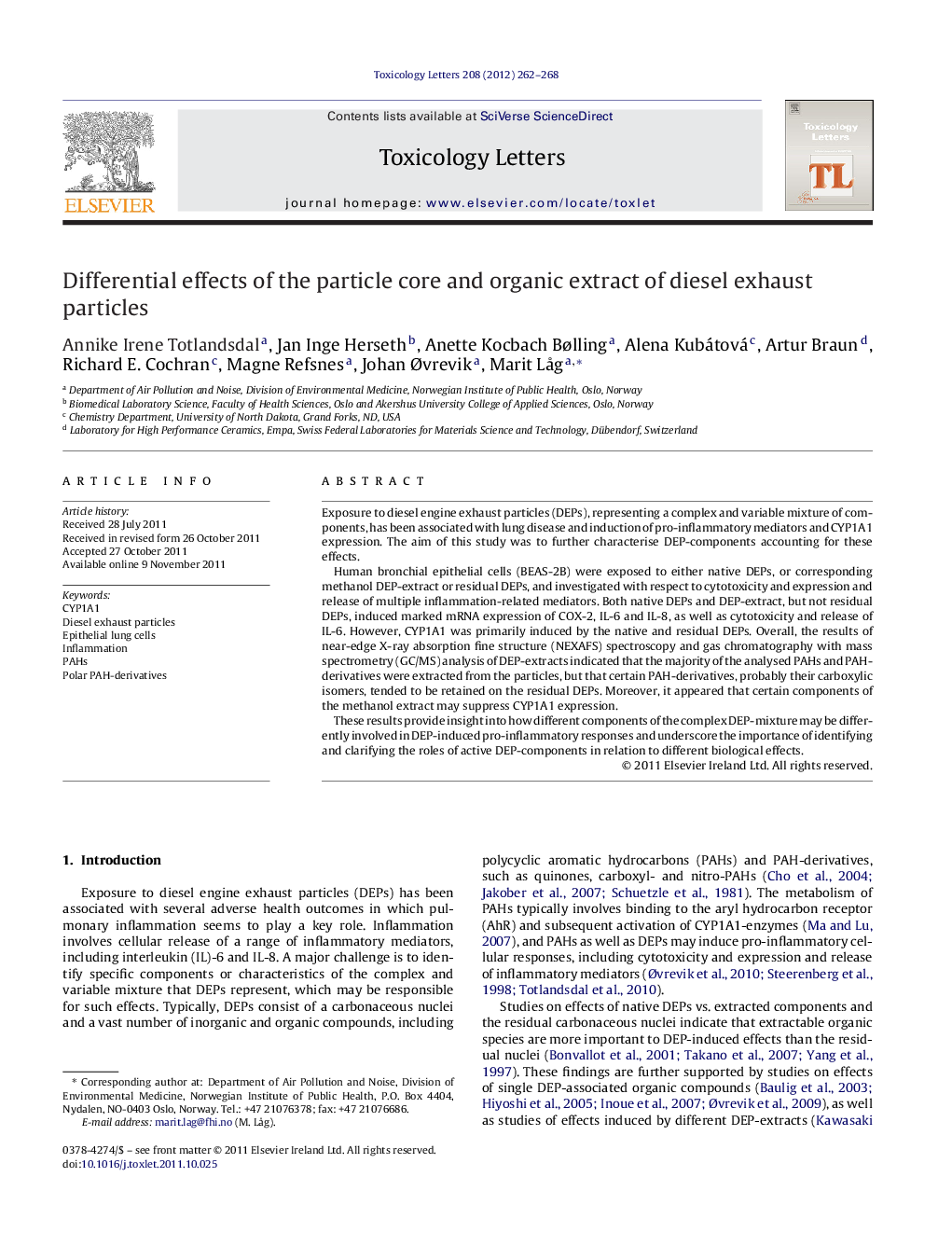| Article ID | Journal | Published Year | Pages | File Type |
|---|---|---|---|---|
| 2599803 | Toxicology Letters | 2012 | 7 Pages |
Exposure to diesel engine exhaust particles (DEPs), representing a complex and variable mixture of components, has been associated with lung disease and induction of pro-inflammatory mediators and CYP1A1 expression. The aim of this study was to further characterise DEP-components accounting for these effects.Human bronchial epithelial cells (BEAS-2B) were exposed to either native DEPs, or corresponding methanol DEP-extract or residual DEPs, and investigated with respect to cytotoxicity and expression and release of multiple inflammation-related mediators. Both native DEPs and DEP-extract, but not residual DEPs, induced marked mRNA expression of COX-2, IL-6 and IL-8, as well as cytotoxicity and release of IL-6. However, CYP1A1 was primarily induced by the native and residual DEPs. Overall, the results of near-edge X-ray absorption fine structure (NEXAFS) spectroscopy and gas chromatography with mass spectrometry (GC/MS) analysis of DEP-extracts indicated that the majority of the analysed PAHs and PAH-derivatives were extracted from the particles, but that certain PAH-derivatives, probably their carboxylic isomers, tended to be retained on the residual DEPs. Moreover, it appeared that certain components of the methanol extract may suppress CYP1A1 expression.These results provide insight into how different components of the complex DEP-mixture may be differently involved in DEP-induced pro-inflammatory responses and underscore the importance of identifying and clarifying the roles of active DEP-components in relation to different biological effects.
► Native DEP and methanol DEP-extract induced marked expression of COX-2, IL-6 and IL-8, as well as cytotoxicity. ► Residual DEPs did not induce the inflammatory mediators, whereas CYP1A1 expression was markedly increased. ► In spite of the CYP1A1-expression by residual DEP the majority of the PAHs were in the extractable fraction. ► However, certain PAH-derivatives, probably their carboxylic isomers, tended to be retained on the residual DEPs.
